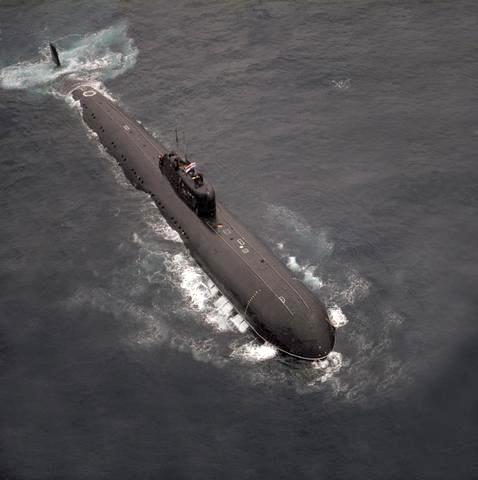Submarine Design
Although submarines can be found with various designs, depending on their purpose, most have the same basic design. The design of submarines didn’t come about just because one person thought it looked cool, there is solid science and thought behind it.
The primary purpose for the design of the submarine is to reduce the drag when underwater.

Where: ρ is density
of the fluid
v
is velocity of the object
A
is reference area of the object
Cd
is the drag coefficient

Where: ρ is density
of the fluid
v
is velocity of the object
A
is reference area of the object
Cd is the
coefficient of drag is generally determined experimentally.
The total drag on an object comes from several other drag components
Form drag – comes from the form or shape of the object. Objects with small cross sections that are streamlined and change slowly will have small form drags.
Viscous Drag (Skin Friction Drag) – caused by the interaction of the fluid with the outermost layer of the object. Viscosity is a measure of how resistant a fluid is, for example, honey has a much higher viscosity than water.
Wave drag – when the submarine is operating at the surface wave drag comes into play. Wave drag acts where an object is being acted on by two fluids at the same location. For instance, the point on the hull of the submarine that is interaction with both the air and the water.
 In
the early years of
submarines, they could not operate under the water’s surface for
extended
periods of time. This necessitated a
design that was effect both above and below the surface.
Most submarines are designed with what is
called a teardrop hull, a design modeled after the shape of a whale’s
body. This shape was the most effective at
reducing
the hydrodynamic drag.
In
the early years of
submarines, they could not operate under the water’s surface for
extended
periods of time. This necessitated a
design that was effect both above and below the surface.
Most submarines are designed with what is
called a teardrop hull, a design modeled after the shape of a whale’s
body. This shape was the most effective at
reducing
the hydrodynamic drag.
image courtesy of www.fas.org
Another important factor to consider when designing a submarine hull is water pressure. Today’s submarines can reach depths of nearly 1000 meters. At that depth the pressure on the hull is enormous. The circular shape of the exterior of submarines is the most effective at withstanding the pressure that is acting equally on all sides of the sub.

Where: ρ is density
of fluid
g
is acceleration of gravity
h
is height of fluid above the object
The two types of submarine hulls are single and double hulls. Double hull subs have an outer hull called, called a light hull, and an inner pressure hull. In single hull submarines, the pressure hull is the also the outer hull. Pressure hulls are most often made of high strength steel and in recent years titanium has been used.

image couresy of www.aynaku.net